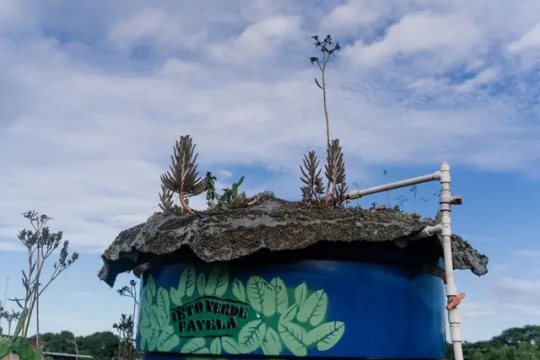someone took a sigh and made it flesh. ur made of star stuff and v v cute xoxo
Don't wanna be here? Send us removal request.
Text
do you ever not write for so long that you’re almost afraid to? like what if I’m dumb now
83K notes
·
View notes
Photo


Am I ready to let him go? Truth is, every day I’ve worn that name, I’ve hated him a little more. I’ve been ready to return him to the sea for a long time.
Lan Zhan, Lan Zhan, let me go.
154 notes
·
View notes
Text
lake wants to kill and gnash and gnash my bones I think
8K notes
·
View notes
Text





Followers' Favorite Horror Movie Countdown 2025 Edition
19. The Cabin in the Woods (2011) dir. Drew Goddard I'm sorry I let you get attacked by a werewolf and then ended the world.
751 notes
·
View notes
Text



got ink?
9K notes
·
View notes
Text
God the way wei wuxian is a ghost before he even dies for real….there should be a million flint x wei wuxian gifsets. Then what do they fear? MEEEEE i hope he blows up charlestown
45 notes
·
View notes
Text
Notpla, the company which makes seaweed-based packaging to replace single-use plastics, started with its two French and Spanish founders, Pierre Paslier and Rodrigo Garcia Gonzalez, experimenting in their student kitchen while at Imperial College London.

Now, Notpla has replaced more than 21 million items of single-use plastic across Europe, and is aiming to displace 1 billion units by 2030. In partnership with Just Eat, Notpla’s packaging was used at the UEFA Women’s Final at Wembley Stadium, London in 2022. From seven types of folded carton board boxes that year, it has grown into a catalogue of over 50 different designs.

And the company is launching a new deli range, featuring plastic-free windows so people can see their sandwiches before buying. Honsinger hopes this will help Notpla branch out into office catering and museums, where that sneak peek is important.
4K notes
·
View notes
Text
"In Northern California, a Native American tribe is celebrating the return of ancestral lands in one of the largest such transfers in the nation’s history.
Through a Dept. of the Interior initiative aiming to bring indigenous knowledge back into land management, 76 square miles east of the central stretch of the Klamath River has been returned to the Yurok tribe.
Sandwiched between the newly-freed Klamath and forested hillsides of evergreens, redwoods, and cottonwoods, Blue Creek is considered the crown jewel of these lands, though if it were a jewel it wouldn’t be blue, it would be a giant colorless diamond, such is the clarity of the water.

Pictured: Blue Creek
It’s the most important cold-water tributary of the Klamath River, and critical habitat for coho and Chinook salmon. Fished and hunted on since time immemorial by the Yurok and their ancestors, the land was taken from them during the gold rush before eventually being bought by timber companies.
Barry McCovey Jr., director of the Yurok Tribal Fisheries Department, remembers slipping past gates and dodging security along Blue Creek just to fish up a steelhead, one of three game fish that populate the river and need it to spawn.
Profiled along with the efforts of his tribe to secure the land for themselves and their posterity, he spoke to AP about the experience of seeing plans, made a decade ago, come to fruition, and returning to the creek on which he formerly trespassed as a land and fisheries manager.
“To go from when I was a kid and 20 years ago even, from being afraid to go out there to having it be back in tribal hands … is incredible,” he said.
Part of the agreement is that the Yurok Tribe would manage the land to a state of maximum health and resilience, and for that the tribe has big plans, including restoring native prairie, using fire to control understory growth, removing invasive species, restoring native fish habitat, and undoing decades of land-use changes from the logging industry in the form of culverts and logging roads.
“And maybe all that’s not going to be done in my lifetime,” said McCovey. “But that’s fine, because I’m not doing this for myself.”
The Yurok Tribe were recently at the center of the nation’s largest dam removal, a two decades-long campaign to remove a series of four hydroelectric dams along the Klamath River. Once the West Coast’s third-largest salmon run, the Klamath dams substantially reduced salmon activity.
Completed last September, the before and after photographs are stunning to witness. By late November, salmon had already returned far upriver to spawn, proving that instinctual information had remained intact even after a century of disconnect.

Pictured; Klamath River flows freely, after Copco-2 dam was removed in California
“Seeing salmon spawning above the former dams fills my heart,” said Joseph L. James, chairman of the Yurok Tribe, the leaders of the dam removal campaign along with the Karuk and Klamath tribes.
“Our salmon are coming home. Klamath Basin tribes fought for decades to make this day a reality because our future generations deserve to inherit a healthier river from the headwaters to the sea.”
Last March, GNN reported that the Yurok Tribe had also become the first of America’s tribal nations to co-manage land with the National Park Service under a historic memorandum of understanding involving Redwoods National Park.
The nonprofit Save the Redwoods bought a piece of land adjacent to the park, which receives 1 million visitors annually and is a UNESCO Natural Heritage Site, and handed it over to the Yurok for stewardship.
The piece of land, which contained giant redwoods, recovered to such an extent that the NPS has incorporated it into the Redwoods trail network, and the two agencies will cooperate in ensuring mutual flourishing between two properties and one ecosystem.
Back at Blue Creek, AP reports that work has already begun clearing non-native conifer trees planted for lumber. The trunks will be used to create log jams in the creek for wildlife habitat.
Costing $56 million, the land was bought from the loggers by Western Rivers Conservancy, using a mixture of fundraising efforts including private capital, low interest loans, tax credits, public grants and carbon credit sales.
The sale was part of a movement called Land Back, which involves returning ownership of once-native lands of great importance to tribes for the sake of effective stewardship. [Note: This is a weirdly limited definition of Land Back. Land Back means RETURN STOLEN LAND, PERIOD.] Studies have shown around the tropics that indigenous-owned lands in protected areas have higher forest integrity and biodiversity than those owned by national governments.
Land Back has seen 4,700 square miles—equivalent to one and a half-times the size of Yellowstone National Park—returned to tribes through land buy-back agreements in 15 states." [Note: Since land buyback agreements aren't the only form of Land Back, the total is probably (hopefully) more than that.]
-via Good News Network, June 10, 2025
6K notes
·
View notes
Text

4K notes
·
View notes
Text





HASSIDRISS 'Echoes Of The Abyss' Collection Couture 2025 if you want to support this blog consider donating to: ko-fi.com/fashionrunways
1K notes
·
View notes
Text

10K notes
·
View notes
Text
"For the first time in 500 years, the European beaver has been seen in Portugal, a moment that one nonprofit has called “one of the most significant steps in the aquatic rewilding of Portuguese rivers.”
As GNN has reported in the case of the UK, there is no animal other than humans capable of engineering its natural environment at the same scale as the beaver, and it’s clearly this trait which has Portuguese ecologists jumping for joy.
Extinct in the small Iberian country since the 15th century, this large rodent has recently been reintroduced and restored in various parts of Portugal’s large neighbor. Gradually, signs began to appear that the beaver (Castor fibre) was progressively inching closer to Portugal, until recent camera trap footage confirmed the animal’s presence in the country.
“We’ve been on the lookout for this breakthrough for a few years now, and now we’re thrilled to confirm its return. The beaver is a natural ally in restoring the health of our rivers and wetlands and has a fundamental role to play in our river ecosystems,” says Pedro Prata, Team Leader at Rewilding Portugal.
Through its constant activity building dams, beavers transform landscapes into watery paradises for small fish, amphibians, invertebrates, insects, and birds. Their damning of rivers diverts water flow in various different directions, cuts channels for floodwater, and creates ponds and wetlands.
“We’re talking about a species that provides ecological services that no modern equipment can replicate with the same efficiency and scale, without costs and bureaucracy that can never be overcome. The beaver improves water quality, creates refuges for other species and helps us fight phenomena such as drought and fires,” emphasizes Prata.
Portugal suffers from both drought and wildfires, which the beaver’s impact can help prevent through the increased water retention in dryland soil, while the wetter lands beaver dams create act as natural fire breaks.
Beavers don’t only live in the forest, they will happily transform a desert river as well.
Rewilding Portugal, in an article celebrating the animal’s return, detailed how they have long since anticipated this arrival, and informed the relevant ecological authorities to prepare for the disruptive effects which beavers bring hand in hand with the positive ones.
France, Germany, Sweden, and Switzerland have all had to cope with the occasional dam-bursting flood, or an agriculturalist complaining about their riverside plantations being damaged, or someone getting their trees gnawed down. They cope with it in different ways, which Rewilding Portugal say is a worthwhile accommodation for the benefits the beavers bring.
Previously, GNN reported that Rewilding Portugal have reintroduced European wood bison into the Greater Côa Valley ecosystem. As the beaver does in water, the bison does on land: engineering the landscape into a biodiverse and resilient patchwork of micro-ecologies."
-via Good News Network, June 18, 2025
931 notes
·
View notes
Text
i love the -with mama trend but sometimes i get sad because that is clearly papa and he aint getting any credit raising those darn kids...
47K notes
·
View notes
Text


Pictured: Luis Cassiano is the founder of Teto Verde Favela, a nonprofit that teaches favela residents in Rio de Janeiro, Brazil, how to build their own green roofs as a way to beat the heat. He's photographed at his house, which has a green roof.
Article
"Cassiano is the founder of Teto Verde Favela, a nonprofit that teaches favela residents how to build their own green roofs as a way to beat the heat without overloading electrical grids or spending money on fans and air conditioners. He came across the concept over a decade ago while researching how to make his own home bearable during a particularly scorching summer in Rio.
A method that's been around for thousands of years and that was perfected in Germany in the 1960s and 1970s, green roofs weren't uncommon in more affluent neighborhoods when Cassiano first heard about them. But in Rio's more than 1,000 low-income favelas, their high cost and heavy weight meant they weren't even considered a possibility.
That is, until Cassiano decided to team up with a civil engineer who was looking at green roofs as part of his doctoral thesis to figure out a way to make them both safe and affordable for favela residents. Over the next 10 years, his nonprofit was born and green roofs started popping up around the Parque Arará community, on everything from homes and day care centers, to bus stops and food trucks.
When Gomes da Silva heard the story of Teto Verde Favela, he decided then and there that he wanted his home to be the group's next project, not just to cool his own home, but to spread the word to his neighbors about how green roofs could benefit their community and others like it.

Pictured: Jessica Tapre repairs a green roof in a bus stop in Benfica, Rio de Janeiro, Brazil.
Relief for a heat island
Like many low-income urban communities, Parque Arará is considered a heat island, an area without greenery that is more likely to suffer from extreme heat. A 2015 study from the Federal Rural University of Rio de Janeiro showed a 36-degree difference in land surface temperatures between the city's warmest neighborhoods and nearby vegetated areas. It also found that land surface temperatures in Rio's heat islands had increased by 3 degrees over the previous decade.
That kind of extreme heat can weigh heavily on human health, causing increased rates of dehydration and heat stroke; exacerbating chronic health conditions, like respiratory disorders; impacting brain function; and, ultimately, leading to death.
But with green roofs, less heat is absorbed than with other low-cost roofing materials common in favelas, such as asbestos tiles and corrugated steel sheets, which conduct extreme heat. The sustainable infrastructure also allows for evapotranspiration, a process in which plant roots absorb water and release it as vapor through their leaves, cooling the air in a similar way as sweating does for humans.
The plant-covered roofs can also dampen noise pollution, improve building energy efficiency, prevent flooding by reducing storm water runoff and ease anxiety.
"Just being able to see the greenery is good for mental health," says Marcelo Kozmhinsky, an agronomic engineer in Recife who specializes in sustainable landscaping. "Green roofs have so many positive effects on overall well-being and can be built to so many different specifications. There really are endless possibilities.""

Pictured: Summer heat has been known to melt water tanks during the summer in Rio, which runs from December to March. Pictured is the water tank at Luis Cassiano's house. He covered the tank with bidim, a lightweight material conducive for plantings that will keep things cool.
A lightweight solution
But the several layers required for traditional green roofs — each with its own purpose, like insulation or drainage — can make them quite heavy.
For favelas like Parque Arará, that can be a problem.
"When the elite build, they plan," says Cassiano. "They already consider putting green roofs on new buildings, and old buildings are built to code. But not in the favela. Everything here is low-cost and goes up any way it can."
Without the oversight of engineers or architects, and made with everything from wood scraps and daub, to bricks and cinder blocks, construction in favelas can't necessarily bear the weight of all the layers of a conventional green roof.
That's where the bidim comes in. Lightweight and conducive to plant growth — the roofs are hydroponic, so no soil is needed — it was the perfect material to make green roofs possible in Parque Arará. (Cassiano reiterates that safety comes first with any green roof he helps build. An engineer or architect is always consulted before Teto Verde Favela starts a project.)
And it was cheap. Because of the bidim and the vinyl sheets used as waterproof screening (as opposed to the traditional asphalt blanket), Cassiano's green roofs cost just 5 Brazilian reais, or $1, per square foot. A conventional green roof can cost as much as 53 Brazilian reais, or $11, for the same amount of space.
"It's about making something that has such important health and social benefits possible for everyone," says Ananda Stroke, an environmental engineering student at the Federal University of Rio de Janeiro who volunteers with Teto Verde Favela. "Everyone deserves to have access to green roofs, especially people who live in heat islands. They're the ones who need them the most." ...
It hasn't been long since Cassiano and the volunteers helped put the green roof on his house, but he can already feel the difference. It's similar, says Gomes da Silva, to the green roof-covered moto-taxi stand where he sometimes waits for a ride.
"It used to be unbearable when it was really hot out," he says. "But now it's cool enough that I can relax. Now I can breathe again."
-via NPR, January 25, 2025
8K notes
·
View notes
Text


Wall have ears. They also love gossip and having your attention 🫶✨
68K notes
·
View notes


